What makes “Joban-mono” seafood attractive from the perspective of a fish professional?
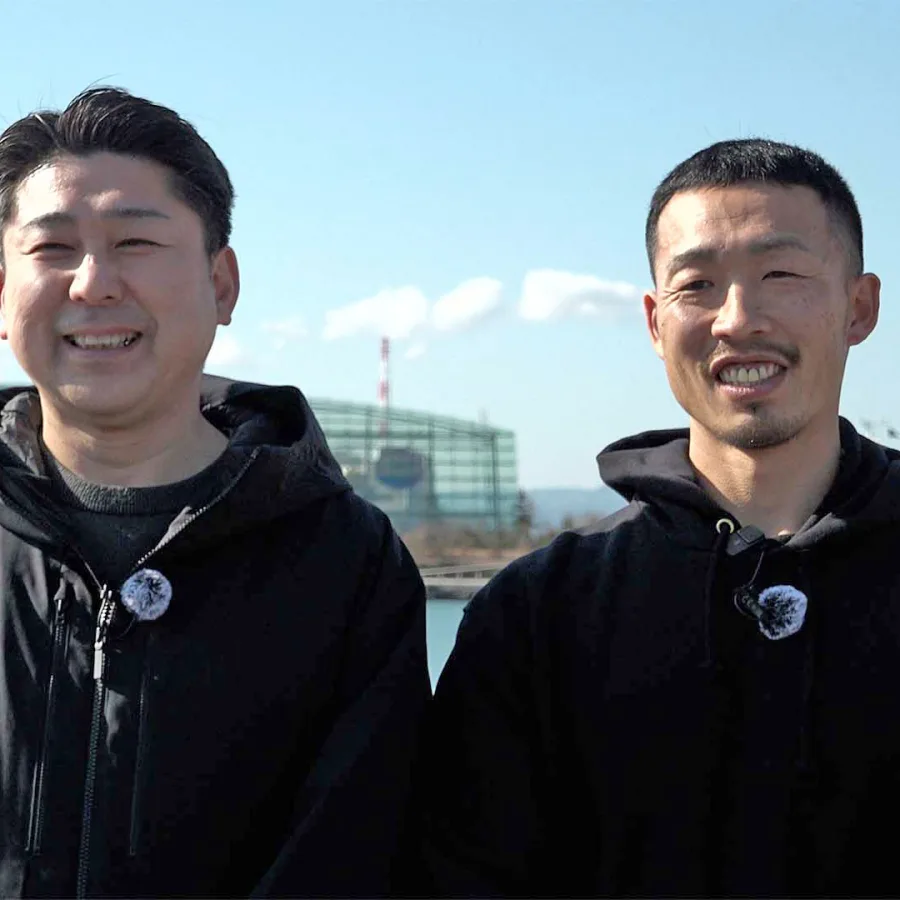
Joban-mono seafood, known for its rich fatty content and thick flesh, is regarded as a sort of brand among market professionals and has earned high praise nationwide. But how does it appear to those who usually deal with fish from different fishing grounds? Male YouTubers working at a fresh fish store in Aichi Prefecture visited Onahama in Iwaki City, Fukushima Prefecture, to verify the quality of Joban-mono seafood from a professional perspective.
Visiting the place that everyone has been talking about
Introducing the teachers…
They are “Hen na Sakana Ojisan (Weird Fish Dude)”, who works at a fresh fish shop at Aichi Prefecture’s seafood market Toyohama Fish Plaza and shares various fish-related information on YouTube, and “Hige no Aniki (Beard Brother)”, who runs a dried fish shop in the same facility and assists with video production.
Toyohama Fishing Port has the highest fish landing volume in Aichi Prefecture, and these two men have been handling and eating fish since they were young, giving them extensive knowledge about the subject.
“We’ve heard rumors that Joban-mono seafood is delicious. We are looking forward to discovering what kind of fish there are.”
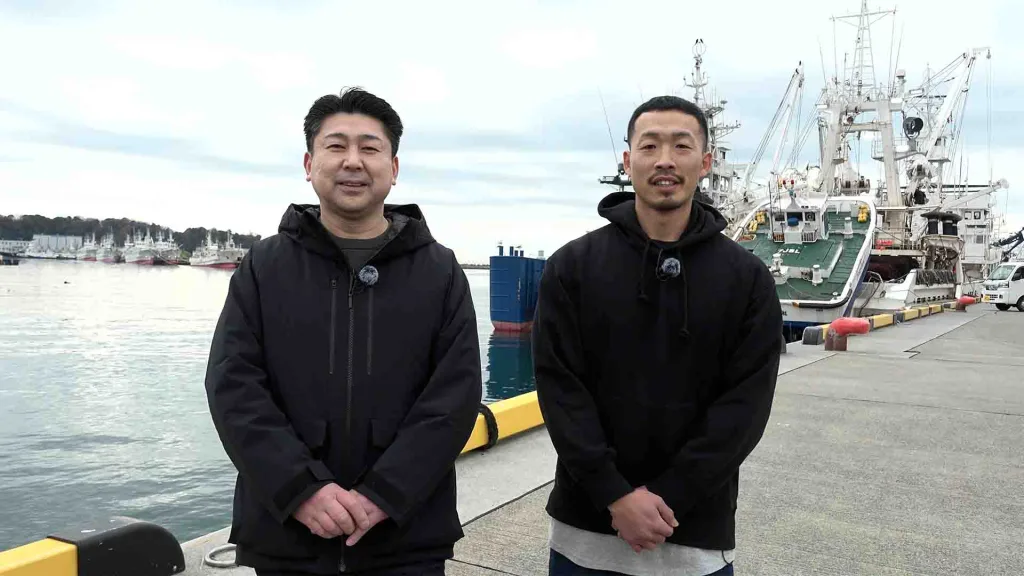
The YouTube channel “Hen na Sakana Ojisan no Negoto (Weird Fish Dude & Beard Brother)” has 570,000 subscribers (as of February 2024).
Impressed by the iconic “that fish”!
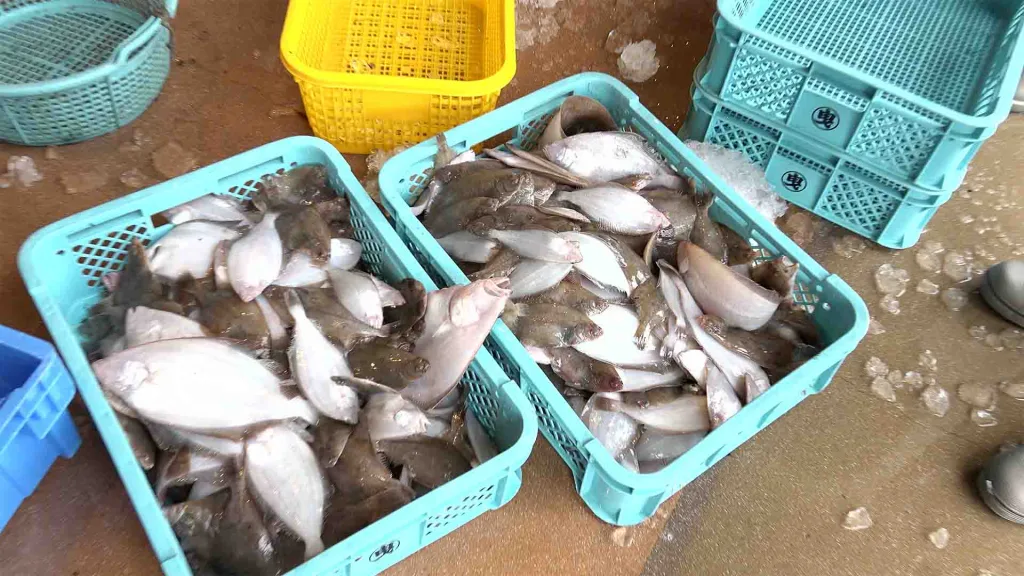
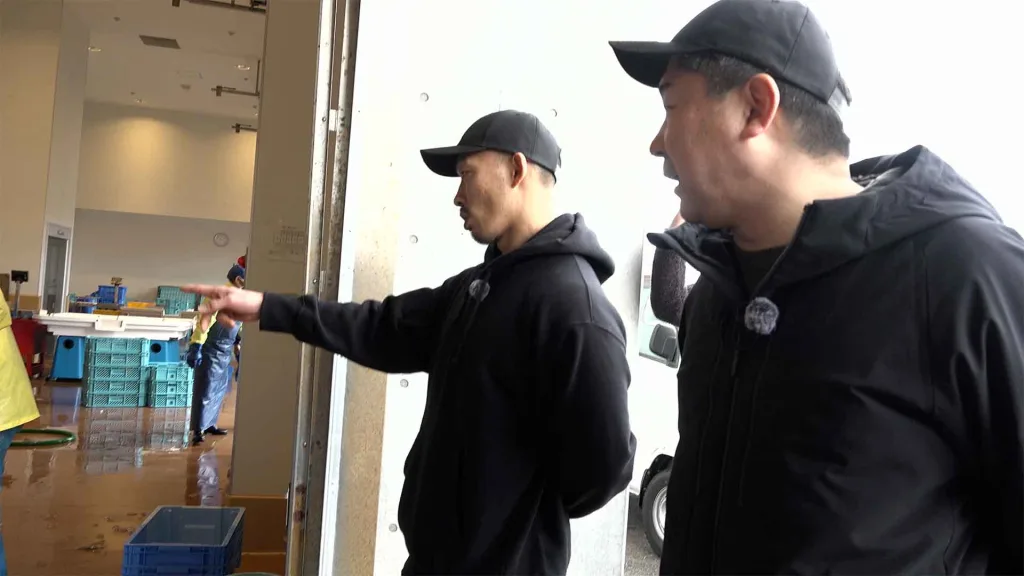
First, they checked landed fish. That day, flounder, eel, and barracuda were among the catches. In recent years, changes in fish habitats have led to species like tiger pufferfish being caught off the coast of Soma and Futaba in Fukushima Prefecture, making the fish varieties not too different from Aichi, according to the two. However, they were surprised by the flounder. Flounder is representative of Joban-mono seafood, with extra-large sizes exceeding one meter often being landed. Hen na Sakana Ojisan was impressed by a flounder so large it stuck out of the case, exclaiming, “Wow! To catch such a flounder, I’m envious.”
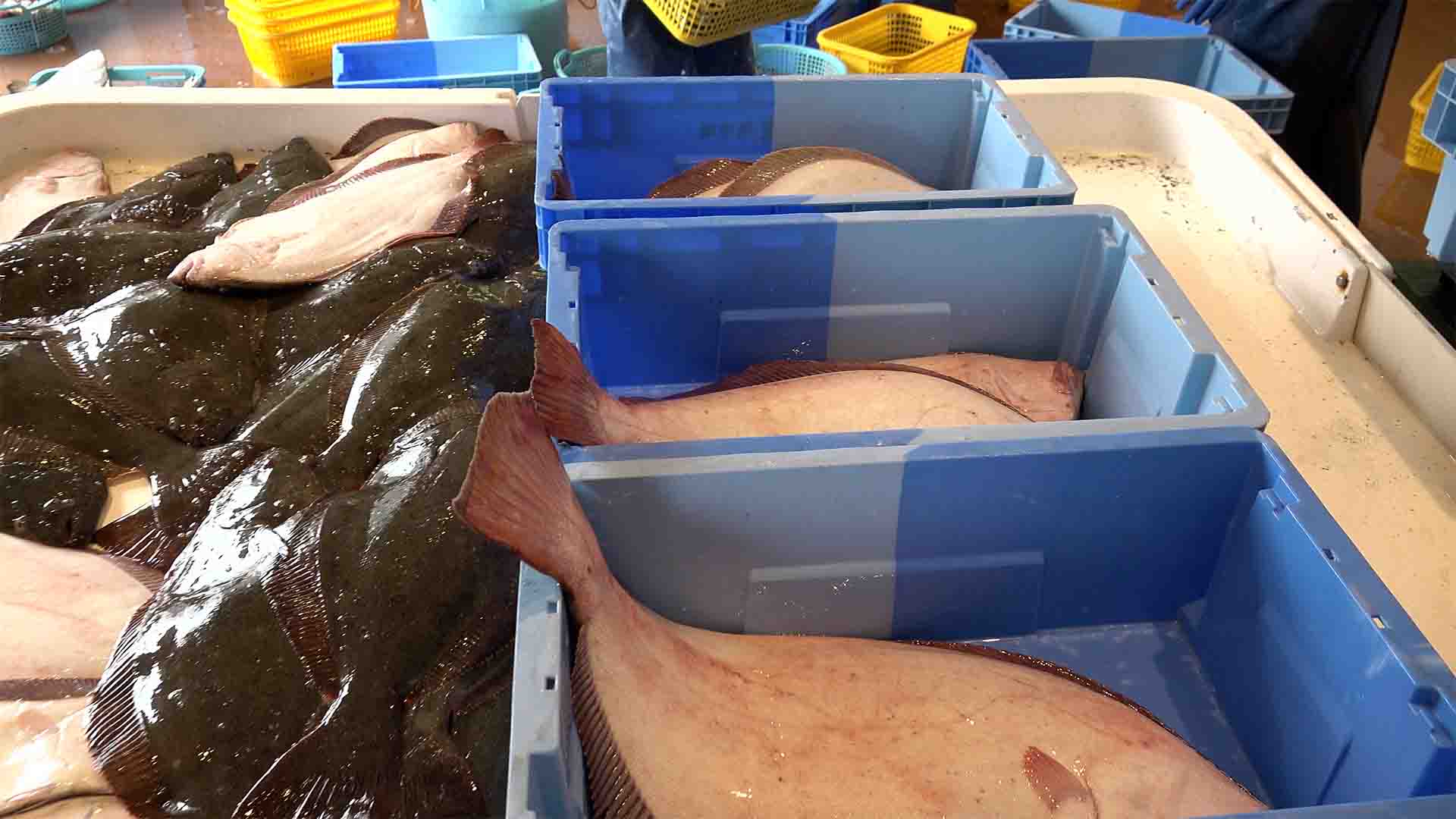
Safety is another attraction of Joban-mono seafood
The two then visited the inspection room in the Onahama Fish Market building. In Fukushima Prefecture, radioactive substance tests have been conducted on landed fish since the Fukushima Daiichi Nuclear Power Plant disaster. All fish species to be shipped that day are subject to testing. Small fish weighing less than 100 grams are minced, while fish over 300 grams are cut open and measured with test equipment. The standard is set stricter than the national standard (100 becquerels per kilogram), at 50 becquerels per kilogram.
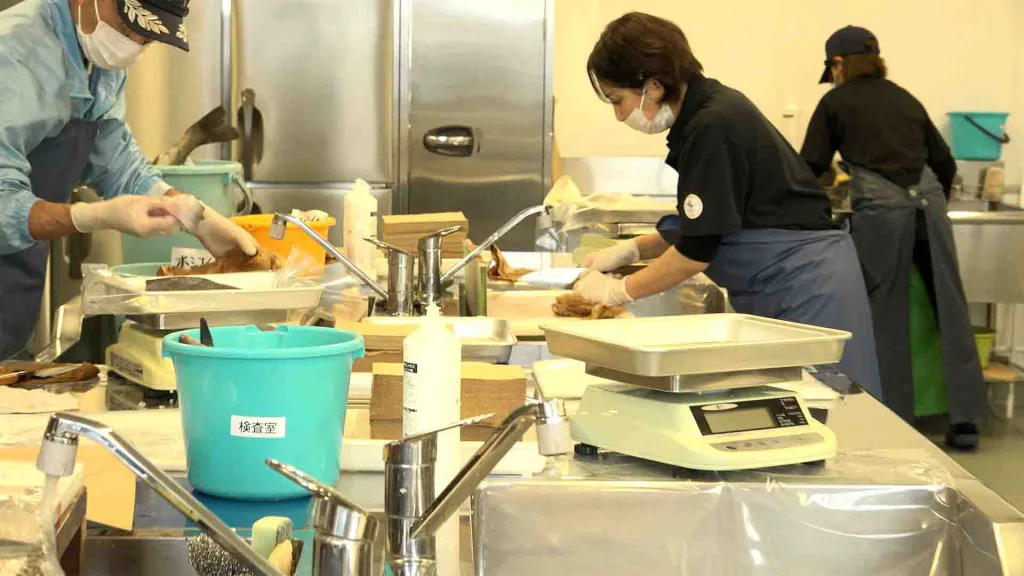
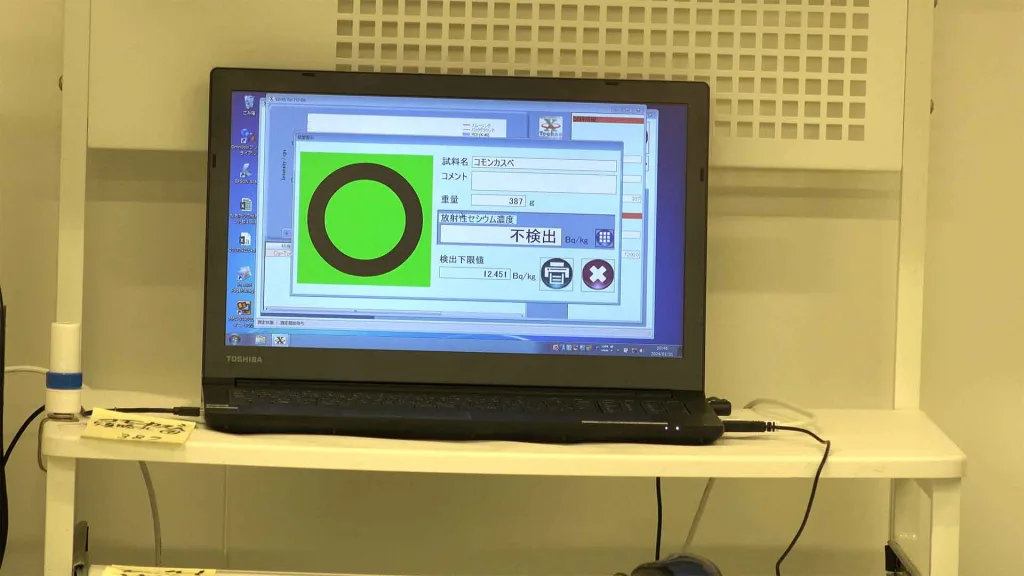
The two men agreed, “We didn’t know that such thorough inspections were being conducted, and it made us realize that food safety is their top priority.” Besides being delicious, Joban-mono seafood’s appeal lies in its ability to offer consumers confidence in purchasing.
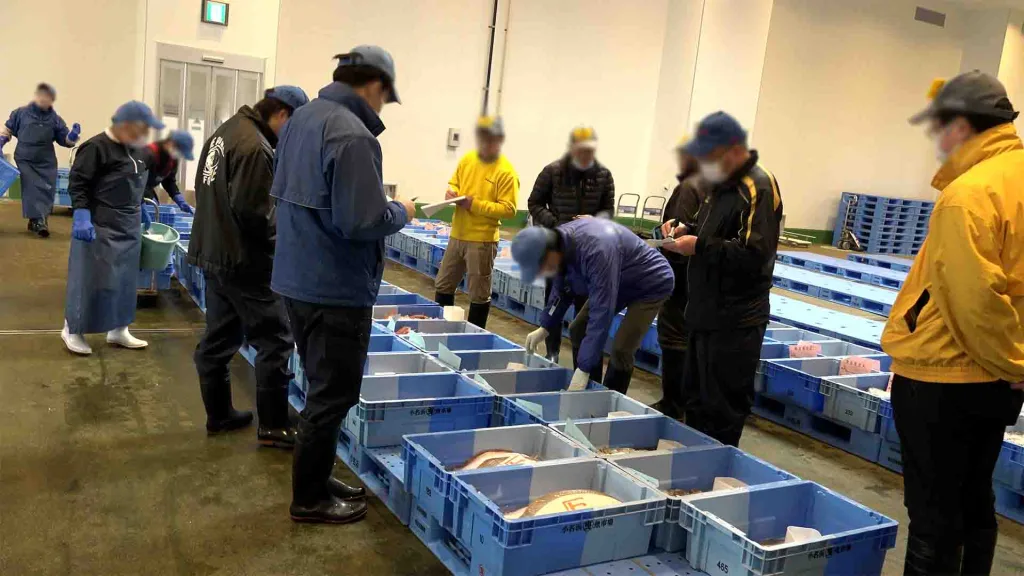
How does Joban-mono seafood measure up in terms of taste?
To savor Joban-mono seafood, they visited “Iwaki Lalamew”, a tourist and local products center located next to Onahama Fish Market. In addition to obtaining fresh seafood delivered directly from the port, visitors can enjoy meals and grilled seafood, making it a facility similar to Toyohama Fish Plaza, where the two work.
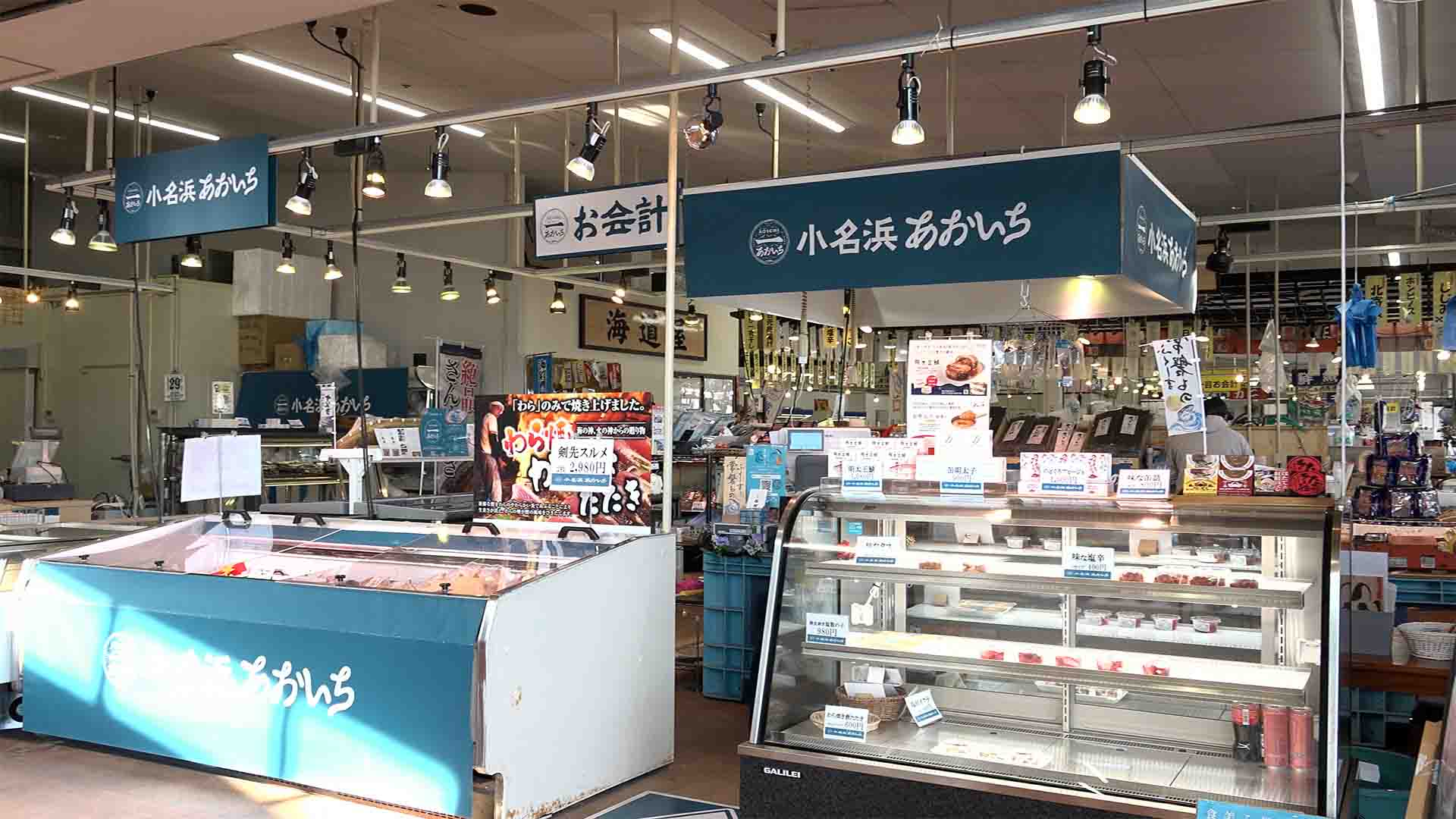
Guiding the visitors was Yutaka Uenodai, who runs the store “Onahama Aoichi” in the complex. Interestingly, he also used to work at a wholesale market in Nagoya, making him a fellow professional with many similarities to the two guests. At Lalamew, his store mainly sells processed products, with the top recommendations being “Sanma no Popoyaki” (grilled minced pacific saury patties), a local dish from Iwaki, and dried open mehikari (greeneyes).
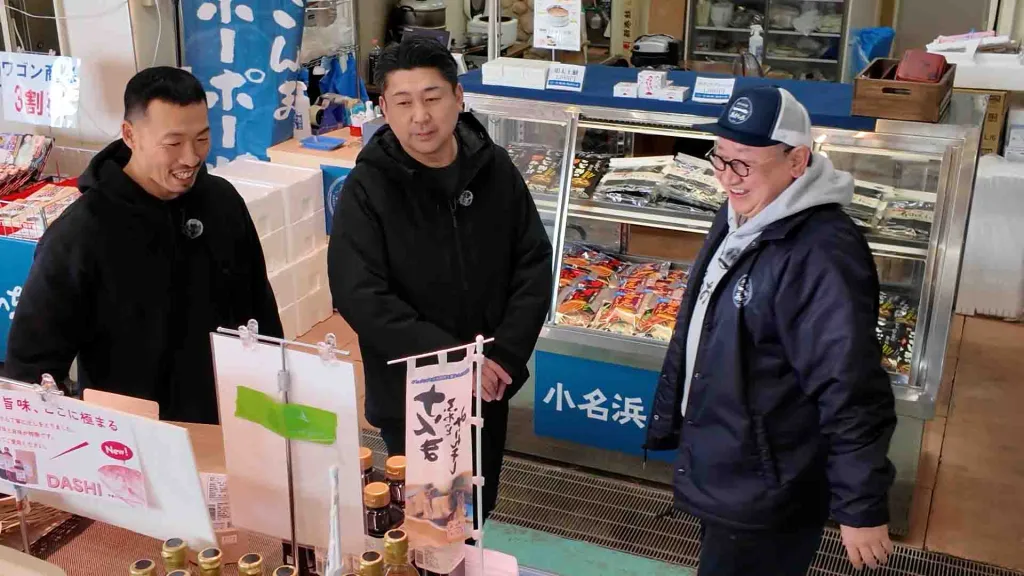

Tasting! How does it taste…?
They quickly decided to try the recommended dishes. As soon as they took a bite, they immediately exclaimed, “Delicious!” They particularly praised the greeneye, noting that “even when dried, it is rich in fat.” Although the greeneye is also landed in Toyohama, quantities are limited, and the fish are generally smaller, making them less commonly consumed. So the experience of tasting thick, plump, and juicy greeneye was a first for them. They also enjoyed Sanma no Popoyaki, commenting that “it has no fishy smell, and it’s delicious. Kids would love this.” They finished the dishes quickly and even bought some to take home as souvenirs.
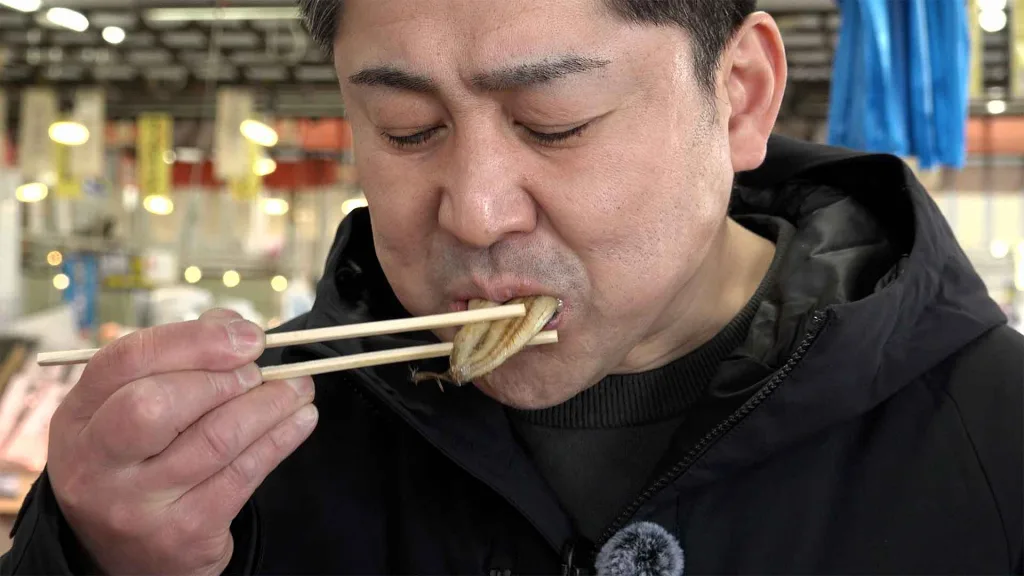
“I want everyone to eat it”
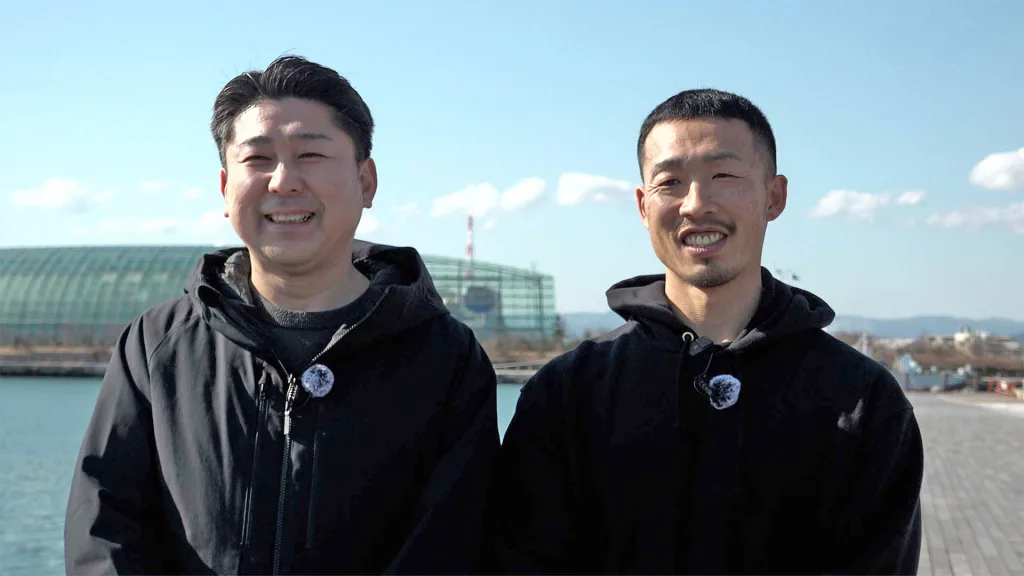
Reflecting on the visit, Hen na Sakana Ojisan said, “I’ve heard rumors that ‘Joban-mono is delicious,’ and it definitely lived up to the hype.” Hige no Aniki added, “I was particularly impressed by the greeneye, which I tasted for the first time. I want everyone to try it.”
Currently, fish catches off the coast of Iwaki have only recovered to about 30% of what they were before the nuclear accident. The two expressed their hopes for the revival of Fukushima’s fisheries, saying, “Since such delicious fish are being caught, it would be great if the industry could return to its heyday.”